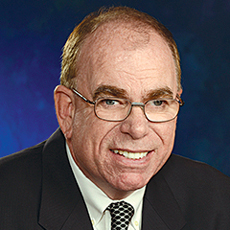
You would think the skilled care field would be doing a happy dance these days.
A business-friendly White House and Congress have been doing the sector’s bidding in ways that once seemed unimaginable. In the past year alone, many proposed regulations have been put on hold, while numerous existing rules are being enforced with far less enthusiasm. And by all indications, there’s more of the same in store.
The latest gift to this field came last week, courtesy of the Supreme Court. In a 5-4 decision, the justices ruled that workers may not band together to fight real or perceived labor-law violations.
Given that regulatory excess is one of the perennial challenges facing operators today, you might conclude that such relief would translate to sector growth. Especially considering that we are on the cusp of what is being called the Silver Tsunami. That’s another name for when unprecedented numbers of prospects will be hitting your demographic sweet spot.
Yet the skilled care sector is not expanding.
And you might conclude that occupancy levels in skilled care facilities surely must be rising, or at least holding steady. But that’s not happening either.
Regulatory headaches are an obvious and easy target. They have certainly inspired thousands of trade show sessions over the years. Fortunately, many of those beasts have been tamed or de-fanged. Yet skilled care remains in a holding pattern?
There are several possible explanations for this apparent contradiction. Here’s mine: The business model needs fixing.
The truth is that for a long time, many mediocre-at-best skilled care operators were able to remain solvent because they were essentially the only game in town, plus reimbursement rules were heavily tilted in their favor. Both of these realities are rapidly changing.
First came assisted living, which scooped away most of the private pay and dementia care business that skilled are operators had previously feasted on. Those same marauders are now looking to snap off post-acute care patients as well. And plenty of home care operators have similar intentions. Then there are changing payment rules that make it easier for others to tap into federal and state funds.
To be sure, many traditional skilled care operators are adjusting. At quite a few facilities, lengths of stay have been cut to days rather than weeks or months. Rehab care is also a big part of the mix at more locations. Some facilities have greatly embraced the post-acute concept, to the point that they now resemble small hospitals.
But far too many operators are lagging behind. It’s a dangerous choice. Operators need to partner with referral sources, document competence — and demonstrate cost savings — if they expect to survive.
Yet many operators seem content to do nothing more than complain that regulations are what’s holding them back.
To be sure, this sector has had to deal with more than its share of oversight. But if you are going to count on the government to largely underwrite your efforts to care for the aged and infirm, you’d darn well better expect to be closely watched and monitored. It comes with the territory.
Besides, if we are going to cut to the chase, many of those onerous regulations now on the books are the direct result of operators engaging in unsavory business practices. Don’t believe me? Google “nursing homes” and take a good look.
For all the good it does, regulatory relief remains a salve. Don’t confuse it for a cure.
John O’Connor is McKnight’s Editorial Director.




